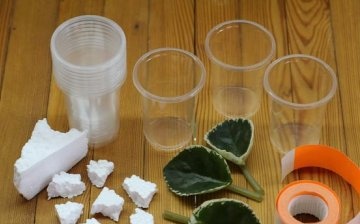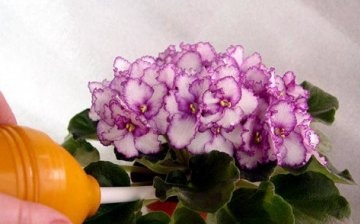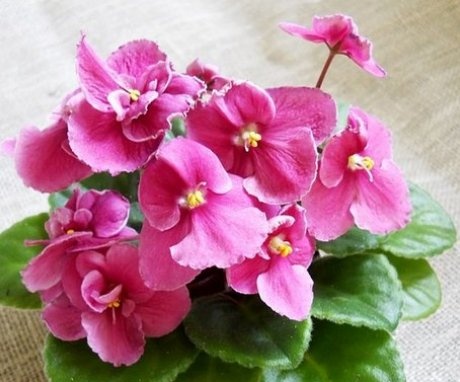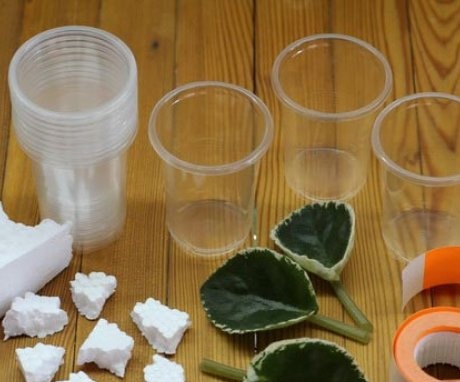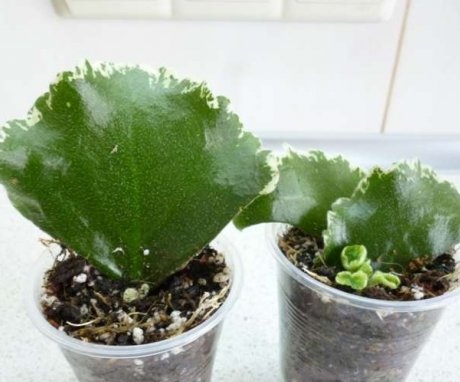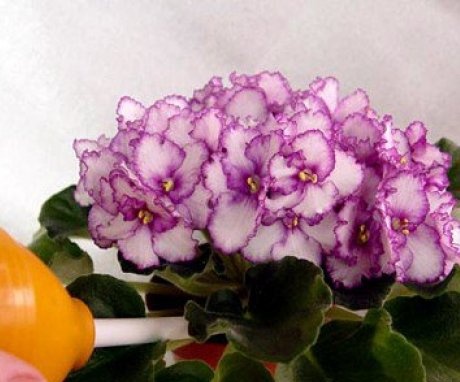Properly growing the best varieties of violets from the leaf
One of the most popular indoor flowers is violet... There are many species of this graceful plant bred by breeders, you can choose for every taste. How beautiful are terry, semi-double delicate petals of various shades, they will become a wonderful decoration of the house.
Many plants reproduce using the leaf. The violet also belongs to them. This growing method is considered the most convenient, simple technology. And most often the result from its use is positive.
Content:
- The best varieties of violets for growing
- Preparing for leaf propagation of a flower
- Requirements for the rooting process of leaf cuttings
- Violet care tips
The best varieties of violets for growing
Representatives of the violet family are often found in nature, but their best species, of course, can be seen in the premises of the house, offices, institutions. They look with aesthetic elegance, not to mention the variety of colors. And all thanks to the efforts of breeders who have bred hundreds of varieties of violets:
- The perennial plant, Belley Snowken, is characterized by flowering with a cap. Looking at the snow-white flower, it seems that a branch of a cherry or apple tree has settled on the window.
- Arctic Frost is unpretentious in terms of growth conditions. But it is better to protect a houseplant from direct rays of the sun.
- Winter Parasol is considered the queen among violets, covered for a long time with flowers in the form of pale pink stars, bordered along the edge with a dark lilac tone.
- The Rococo variety has exotic cream-colored flowers with corrugated petals.
- Adonis attracts with pale blue flowers with a yellow eye in the middle.
- Violets of the Morenkenig variety are distinguished by the nobility of a rich black tone.
- Not afraid of heat, resistant to low temperatures Majestic Giants with large flowers reaching a diameter of ten centimeters.
- Violet Tarabar with variegated petals is very popular with flower growers. The color scheme of this species is diverse. The variety is picky about soils, temperatures, air humidity.
All varieties of the plant are characterized by long flowering, from spring to autumn.
Preparing for leaf propagation of a flower
Prepare for reproduction with a leaf carefully:
- For rooting, use a plastic container with drainage holes.
- Small pieces of styrofoam will be placed on the bottom of the glass.
- For further growth, a pot is needed, the size of which should be no more than the diameter of the plant's rosette, up to about fifteen centimeters at a height of ten. Violets like to live in cramped conditions.
- The soil for a potted flower can be purchased at a specialty store, or you can create it yourself. To do this, river sand is added to the universal soil, two handfuls wood ash and sphagnum moss, previously crushed. Before planting, the soil needs to go through oxygen saturation for a week, just by lying in the open air.
The leaf of the plant, which serves as a planting material, is taken from the second row or from under the peduncle. Cut it off with a sharp knife, as scissors can ruin the nutritive tubules of the stem. violetsholding them.
The main requirement for the leaf petiole is the absence of damage, strong healthy appearance.
The length of the planting material should be no more than three centimeters, due to which it will not be necessary to support the plant, it will be quite stable in the nutrient substrate. Even if the twig is shorter, then there is nothing terrible in this, it can also take root well. After the preparatory procedures, you can proceed to planting the leaf.
Requirements for the rooting process of leaf cuttings
In order for the leaf to take root, use its planting in a glass with soil or put it in a container of water. The first method is safer, because roots may not appear in the water due to leaf rot. But this does not always happen, and you can try to root in a glass of water.
The petiole is dipped into the liquid so that the leaf plate does not touch it. Water must be constantly renewed by adding new water. You can add a crushed activated carbon tablet to the glass. The roots will appear on the cut in two weeks. After that, you can place the cutting in a pot of soil. It is important that the petiole does not stand too much time in a glass of water.
The appearance of children on the roots will indicate that it is impossible to delay transplanting, small violets are removed at the same time.
And this is how rooting takes place in the soil substrate. A petiole is placed in a transparent container with moistened soil, slightly compacting the soil around it. Cover the top with a plastic bag or cup. If the room is humid, this can be omitted. The appearance of condensation on the shelter should alert: the plant is too humid, stuffy under the hood. In this case, it is better to open the sheet, otherwise it will rot.
As soon as the color of the children appearing in the cup becomes saturated, with a green pigment, they are separated from the mother cutting. Transplant in a separate container is carried out carefully, without deepening the growth point. The main stage of reproduction has been passed, now it is possible, by proper care, to give the young plant to grow stronger.
Violet care tips
Young flower seedlings are quite whimsical, so they need to create optimal living conditions:
- When growing violets both the sheet and the children should be in a room with an air temperature of at least twenty degrees Celsius. A window sill will not work for this - it is cool in the morning.
- Lighting for delicate violets plays a big role. If it is not enough, then additional backlight in the form of fluorescent lamps. The flower needs sufficient light for twelve hours. This also applies to mature plants. But they don't need direct sunlight either. Leaves can get burned when they are on the windowsills of the south, west side. To prevent this, it is necessary to shade the landing.
- Young seedlings are watered with warm, previously settled water. Watering should be carried out as the top layer dries. Pouring is not recommended, otherwise the violet will die. It is impossible for the liquid to get on the leaves, they can become covered with ugly yellow spots. This is especially true for spraying with cold water.
- If there is no time to take care of indoor pets, you can use the pallet as a way to constantly moisten the soil. By placing the pot in a flat container of water, you can forget about frequent watering of violets.
- Plant feeding is carried out no more than twice a month. Better to use the complex mineral fertilizers, which specialty stores offer for flowering plants.
- As soon as the children are strewn with peduncles, they are transplanted into prepared pots with soil. Usually the process takes place by the transfer method, while removing the lower leaves.
More information can be found in the video:
The violet will bloom luxuriantly when the growth conditions meet its requirements. Experiencing constant stress from poor watering, low lighting, low temperatures, the flower will not show all its beauty.
Growing violets is fun.Many housewives collect these exquisite flowers. How to properly grow them from a leaf in order to preserve the varietal characteristics of the plant is described in the material. After reading it, you can understand that it is not difficult to do this. The preparatory work, the transplanting process will not take much time, it will only require diligence and patience.





